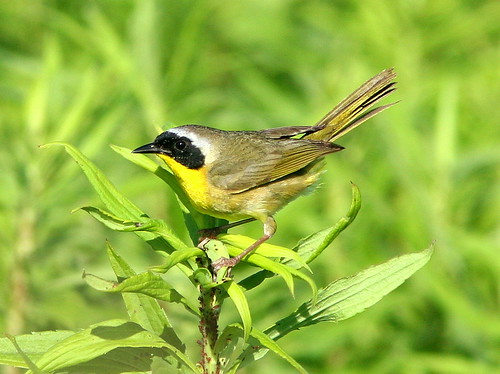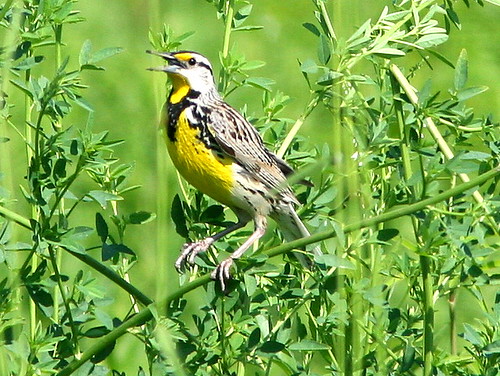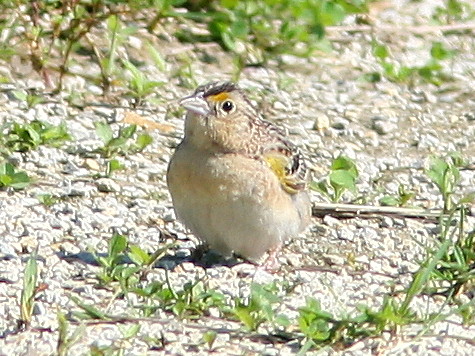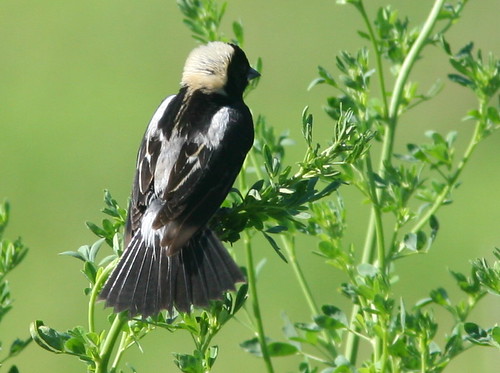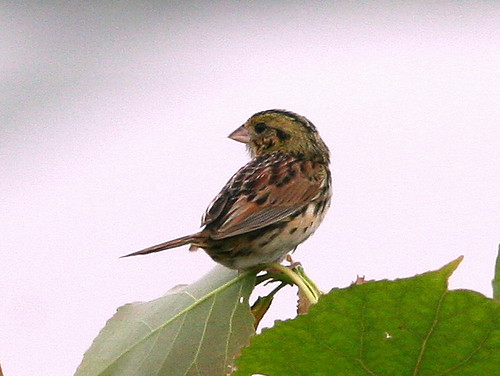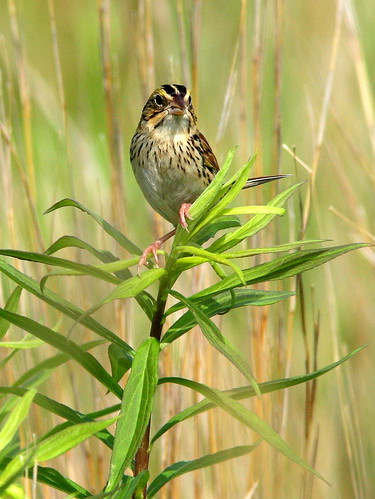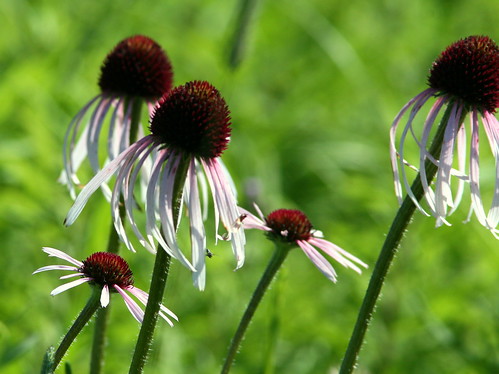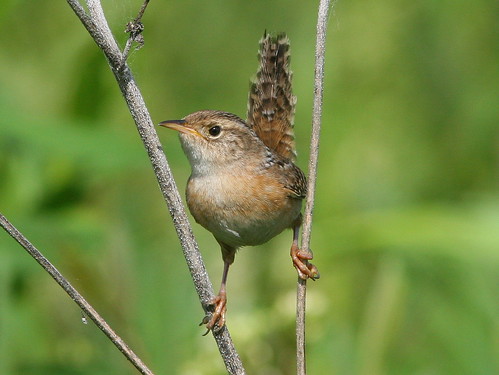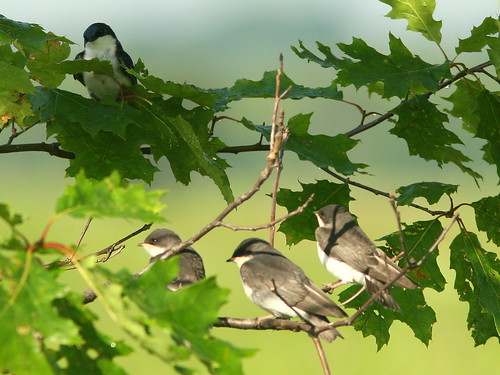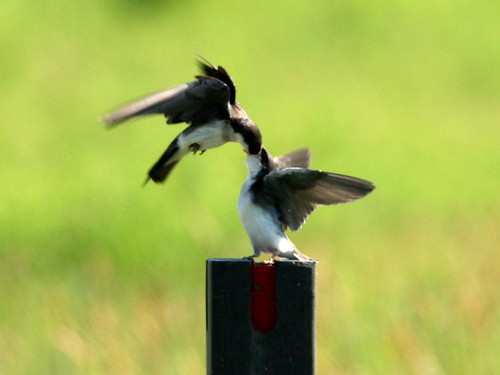(Click on images for larger views. View a slide show of Nelson Lake morning walks at end of this post)
After a hot spell, the Illinois mornings have turned cool, and yesterday morning’s walk in nearby Nelson Lake Forest Preserve was sunny, breezy and a chilly 65 degrees. The wind rustled the prairie grasses and attenuated the sounds of the birds. The voices of many Red-winged Blackbirds, meadowlarks, Dicksissels, yellowthroats and Song Sparrows rose above the wind.
Dicksissel singing:
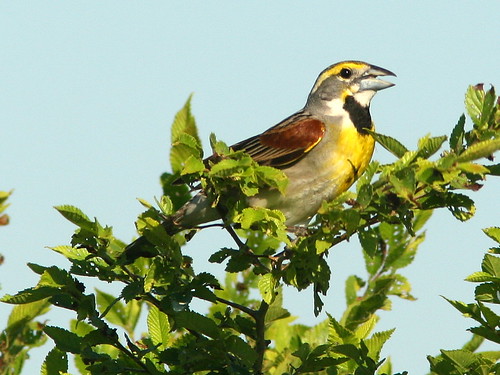
Common Yellowthroat:
Eastern Meadowlark:
Savannah and Grasshopper Sparrows were strangely silent, as they foraged along the path. The warm morning light enhanced the yellow on this Savannah Sparrow’s brow:
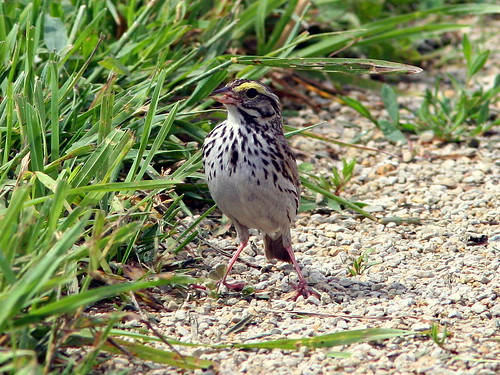
The bright highlights in this Grasshopper Sparrow’s plumage surprised me:
The rollicking song of a single Bobolink caught my attention as he flew overhead. I had hoped to get some better photos of Bobolinks, but there were none in the area where we suspected they were nesting only a couple of days before.
I photographed this Bobolink on our previous Nelson Lake walk, on June 22. Its hindcrown appeared much more yellow in life:
We listened for the elusive Henslow’s Sparrows, but if any were singing, they could not be heard above the whistling wind. To human ears, the “song” of a Henslow’s hardly deserves to be called that, as it consists only of a single “chir-lip,” delivered monotonously at intervals of about 10 seconds. The bird seems to put its whole heart and soul into each brief rendition, thrusting up its bill and often closing its eyes as if enjoying the sound of its own voice. The song resembles the call of a House Sparrow, somewhat shortened, rather loud but often muffled by the tall grasses swaying in the breezes. It has a ventroliqual quality, seeming to come from very nearby, but getting ever louder as one approaches the vicinity of the songster. At one point it was so hard to localize that it sounded as if the bird were sitting right on top of my hat!
Only a few days ago, two territorial Henslow’s Sparrows serenaded us from low perches close to the path: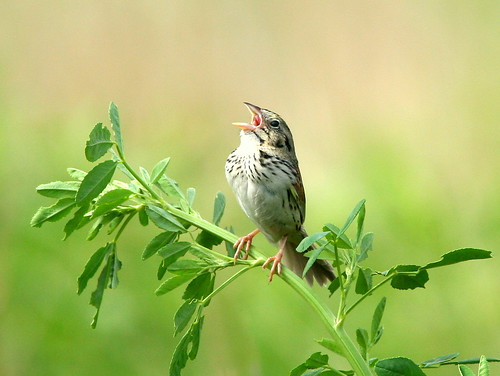
Note the rusty wings and distinctive olive-greenish cast to the head of the Henslow’s Sparrow:
This is our second summer in Illinois, and last year we were delighted to find several singing Henslow’s Sparrows. This year there were none in their old haunts, probably for a good reason. A controlled burn had altered their habitat. The fire had cleansed the prairie of woody plants that can quickly change it into a savannah and then a woodland. It also returned valuable nutrients into the soil. As a result, the grasses had sprung up fresh and green, and wildflowers bloomed profusely. Why were there no Henslow’s Sparrows?
These tiny birds, only 4 1/2 inches long and weighing less than a half an ounce, once were very numerous on the central plains. As has been the case with other grassland birds, the population of Henslow’s Sparrows declined sharply around the middle of the 20th Century. In Illinois, studies suggest that the population of Henslow’s Sparrows declined as much as 94% between 1957 and 1979. Partners In Flight designated this species as its highest priority among all grassland birds for conservation in the midwestern United States. The greatest decreases in songbirds have occurred among grassland species, and the Henslow’s Sparrow has been the hardest hit of all.
Large open expanses of tall grass prairie are essential for the breeding success of Henslow’s Sparrows. They will not nest in smaller patches of otherwise suitable habitat. Most important in the decline of these birds was the conversion of the prairies into cropland. In the midwest, over 99% of the original grasslands have disappeared. Disruption of the natural cycle of prairie fire has also been detrimental. These sparrows will not nest in an area that has been burned over in the previous year, as they require an accumulation of dead grass left over from at least one winter. The second through the fourth year after a burn seem to supply just the right amount of ground litter. In subsequent years, as woody plants and taller forbs thrust up above the chest-high grasses, the birds fail to return to the same place to nest. Since they are loosely colonial, they may all disappear at once, only to show up somewhere else, where the succession from fire to lush grassland is at just the right stage. That probably explains why I no longer found them nesting in last year’s haunts.
Coneflowers bloomed on the prairie:
A Sedge Wren popped up unexpectedly, quite a distance from the wetland:
In a small tree near the north entrance to the prairie, a family of Tree Swallow chicks waited to be fed:
An adult hovers while feeding its fledgling:
Nelson Lake Slide Show. Click lower right corner of image for full-screen view:














